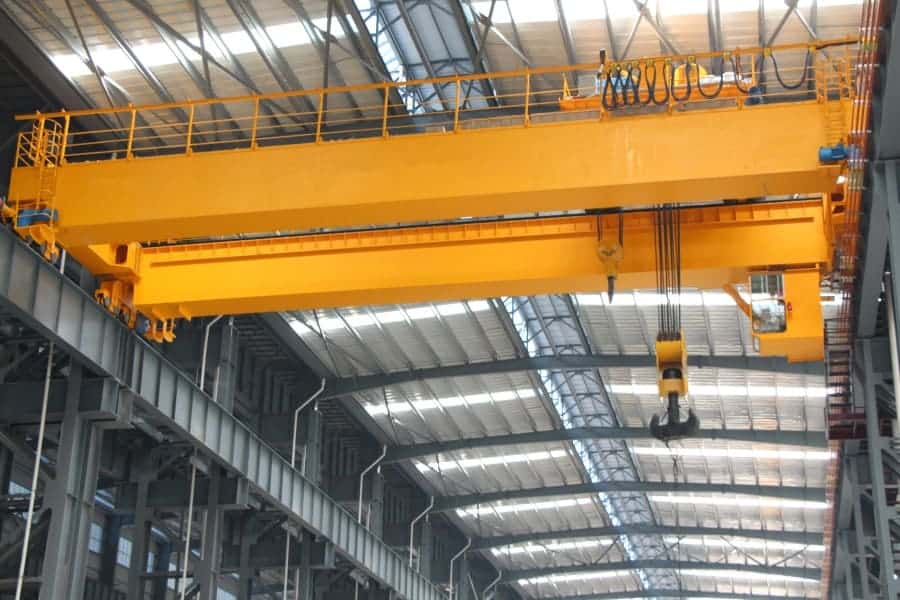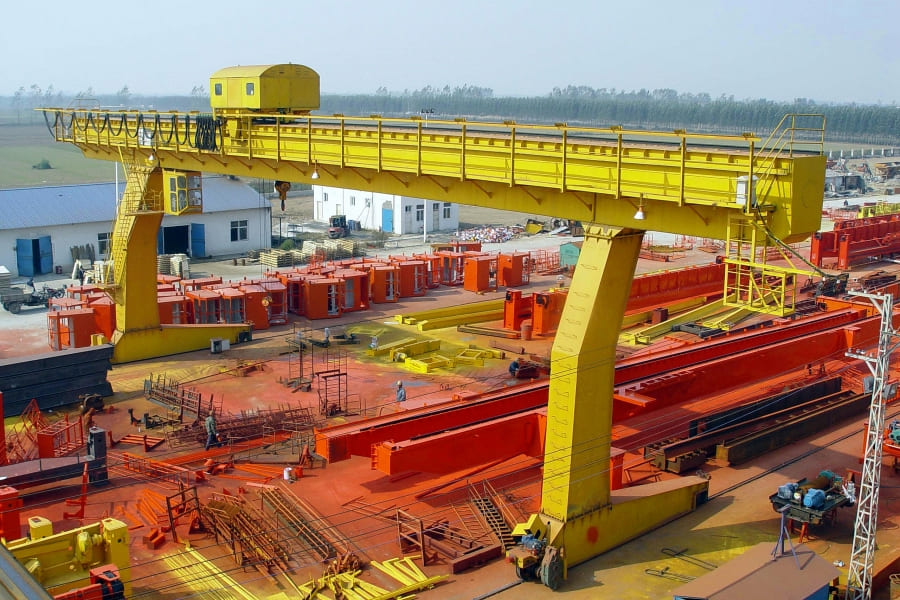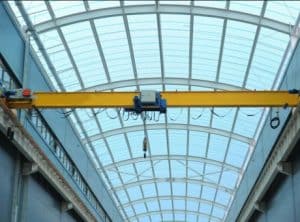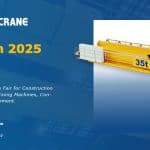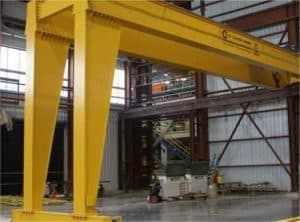industrial electric overhead travelling crane is horizontal frame in the workshop, warehouse and open storage yard above, used to lift all kinds of objects of mechanical equipment usually called “crane” or “traveling crane It is a mechanical equipment usually called “crane” or “traveling crane”. It is the machinery industry, metallurgical industry and chemical industry, the most widely used a lifting machinery with the use of enterprises more and more often, in the normal use of maintenance, top running overhead crane will often appear gnawing rail phenomenon. Next we will analyze this phenomenon.
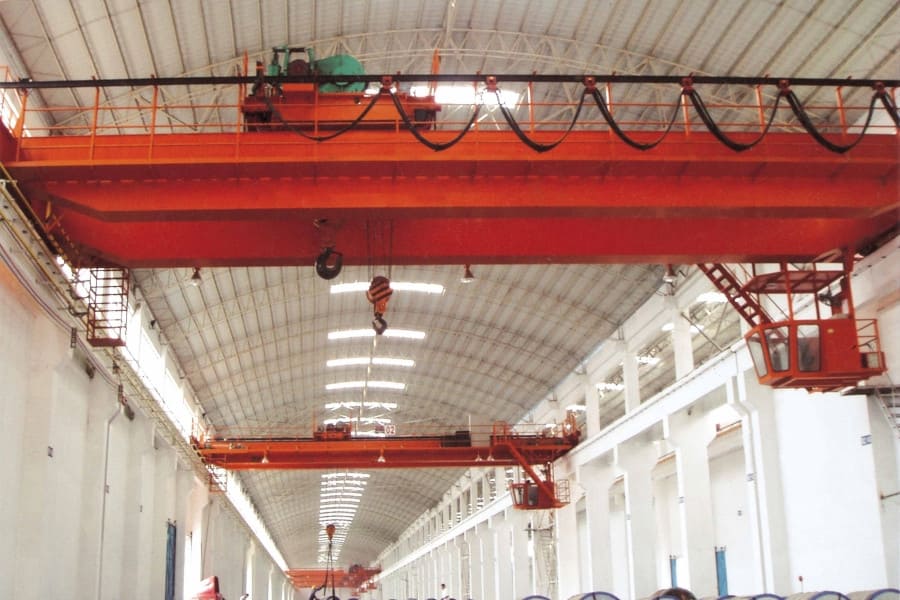
Gnawing rail definition: gnawing rail refers to the crane trolley or trolley running process, the trolley or trolley wheel rim and track side should maintain a certain clearance, but due to the wheel rim and track side contact to produce horizontal lateral thrust, caused by the wheel rim and the track of the friction and wear and tear, usually referred to as gnawing rail.
What are the hazards of ceiling mounted bridge crane?
- Reduce the service life of the wheel: because the crane wheel material is generally used cast steel, after quenching and other processes, generally can be used for more than 10 years. But due to the gnawing of the rail, the life of the wheel will be greatly reduced, which will seriously affect the production safety and productivity.
- Wear track: gnawing rail situation occurs, wheels and rails due to rigid contact, will to a certain extent exacerbate the wear and tear of the track, with the increase in wear and tear, the stability of the crane size of the car is reduced, seriously affecting the safety.
- Danger of derailment: when the wheels or track wear is serious, the wheels may climb to the top surface of the track, resulting in derailment of the car or trolley, triggering safety accidents.
- Impact on the structure of the plant: used for crane gnawing rail will emit noise, cause vibration, and crane operation will produce horizontal lateral force, so that the crane produces abnormal vibration, which is the plant building vibration, by a certain degree of damage.
Heavy duty overhead traveling crane gnawing rail judgment and performance:
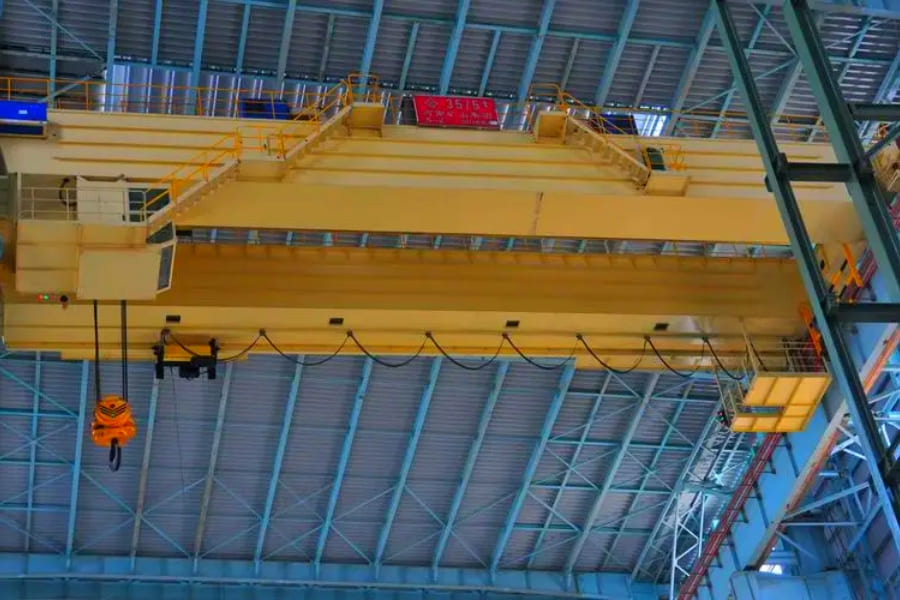
- On the side of the crane track there is a very obvious friction very bright plane, guide rail has a very sharp edges, the top surface of the track has a snow-white bright spot.
- When the overhead crane is traveling, the gap between the wheel rim and the rail has a clear phenomenon of becoming larger or smaller.
- When the bridge crane is running, the body of the vehicle is skewed and the wheels go out of alignment.
- Big car running will produce ear-piercing gnawing sound, gnawing rail serious, big car will not only produce ear-piercing noise, and will cause big car slight jumping, which is what we usually say climbing rail phenomenon.
What are the reasons for top running overhead crane gnawing rail analysis?
Crane gnawing causes many reasons, but the main reason for these two aspects: one is the track deformation; the second is the crane industry manufacturing technology defects and the installer’s ability to install and lack of technology.
Caused by track deformation of the reasons are as follows:
- As the crane’s large and small car often walk back and forth on the track, the track to withstand this pressure in the external manifestation of intermittent, and in the form of stress within the track for the alternating stress, which back and forth repeatedly, it will make the track deformation or displacement.
- Crane size car traveling mechanism in the ideal design, is walking in a straight line. But in practice, is the weight of walking, which will not have any effect, but different enterprises have different management, staff operating skills are also different, there will be outside the phenomenon of pulling the slant hanging, this phenomenon is bound to gnaw the rail.
- Track foundation changes. For example, geological subsidence. Whether the crane can walk normally, mainly depends on the state of the track. At present, the most commonly used method is to constantly adjust the track.
The installation quality of the wheels and the quality of the wheels themselves is also an important reason for the phenomenon of chewing the rails:
- ceiling mounted bridge crane long time overload operation, or crane main beam residual stress caused by the crane’s main beam, end beams, frame deformation, caused by the skewed wheels, resulting in gnawing.
- The diameter of the tread of the two active wheels is not equal. When the crane is running, because the wheel diameter is different, both sides of the wheel in the same motor speed, the running speed is bound to be different, which will cause the “drawing circle” phenomenon, which makes the wheel rim and the track on both sides of the rigid contact, resulting in gnawing the rail phenomenon.
- Drive the host is not synchronized. Driven by the operation of the two motors running motor speed is different or one side of the motor damage, resulting in different linear speed of the wheels, resulting in the car body as a whole run off, resulting in the gnawing rail phenomenon; coupling between the two ends of the transmission gap is too large, resulting in the wheels can not be started at the same time, but also caused by gnawing the rail.
- Wheel and track mismatch. If the wheel and track mismatch. Gap is too small, will make the wheel rim and track side contact, produce gnawing rail; gap is too large will produce the same situation. 4 wheels are not in the same level, resulting in an active wheel overhang or slippage, so that the car body skewed running; while the top surface of the track debris, caused by the wheel’s running speed is not consistent. These are the reasons that lead to gnawing rail.
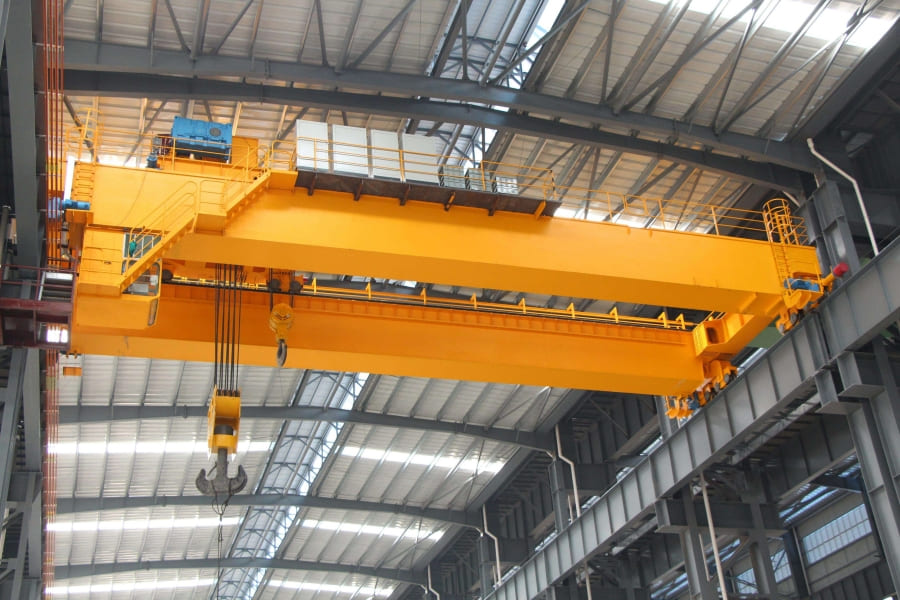
Gnawing rail solution-correction track
The new track is installed, must be strictly adjusted before delivery. In the adjustment should be prepared before the corresponding tools, such as: steel tape measure, level meter, tensioner and fine steel wire and so on. Use the steel tape measure to measure the gauge between the two rails, and use the level meter to measure whether the horizontal height of the two rails is the same. Use the tensioner and fine steel wire to adjust the horizontal straightness of the rail. When installing wheels, the horizontal deviation should be controlled at △ ≤ L/1000 (L is the length of the wheel measuring diameter on the parallel datum line), and the vertical deviation should be controlled at △ ≤ H/1000 (H is the length of the wheel measuring height in the vertical direction).
Adjustment of the old track, its methods and requirements are roughly the same as correcting the new track, but before adjusting the old track, it should be inspected in detail, the inspection contents are:
①Check whether there is any crack or breakage of the track.
② Check whether all the bolts and nuts are loose or damaged.
③Check whether there is any damage to the pressure plate and gasket of all tracks.
④When calibrating the whole track, use the appropriate tools and accurate methods to measure the gauge, level and horizontal straightness error of the two rails and record it.
Solve the gnawing rail by adjusting the wheels: Replace the worn wheels in pairs, the influence of the wheels on the operation due to the diameter difference can be eliminated, and the installation accuracy of the wheel set can be adjusted. Reduce the manufacturing error of the wheel set itself.
Inspection and calibration of transmission mechanism
① By carefully checking the transmission mechanism, if it is found that the transmission mechanism has a large gap, the coupling and gearbox must be overhauled or replaced.
② The first big car active wheel adjustment installed, and then based on this, in turn, the overall coupling, reducer and big car walking motor between the horizontal axis of the calibration, in order to avoid shifting, should be used to locate the block welded reducer.
③ Detect and adjust the motor speed on the transmission mechanism, if the motor speed on both sides is still inconsistent, it is recommended to replace the motor with the same model from the same manufacturer.
④ Adjust the brakes at both ends in a coordinated manner, i.e., the brakes at both ends are fully open without additional frictional resistance during operation, which can prevent the phenomenon of unequal braking torque and crane gnawing on the rail when braking.









